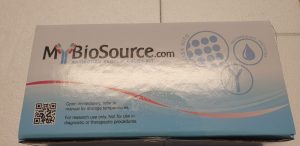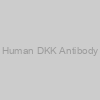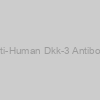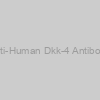Antibodies, Assay Kits, Biology Cells, Brd4 Antibody, cDNA, Ctip Antibody, Culture Cells, Devices, DNA, DNA Testing, Enzymes, Equipments, Exosomes, Gels, Irak3 Antibody, Isotypes, Nmnat1 Antibody, Nse Antibody, Olig2 Antibody, Otx2 Antibody, Panel, Particles, Pcr Kits, Rfp Antibody, Ria Kits, RNA, Sod2 Antibody, Stat5 Antibody, Vector & Virus, Vitronectin Antibody
Cavitas electrochemical sensors for the direct determination of salivary thiocyanate levels
Noninvasive prognosis utilizing salivary samples to detect thiocyanate supplies important data on particular person well being. This text demonstrates the primary instance of a wearable sensing gadget to noninvasively assess thiocyanate ranges. The custom-made screen-printed electrode system is built-in right into a type of a mouthguard squarewave-voltammetric sensor towards the handy and quick detection of the salivary biomarker inside 15 s. The sensor with a protecting movie to mitigate the impact of biofouling gives excessive sensitivity and selectivity towards the detection of thiocyanate ions. Partial least sq. regression is utilized to research the high-order squarewave-voltammetric knowledge over the utilized potential vary of 0-1.75 V vs Ag/AgCl and quantify the thiocyanate focus in a fancy matrix.
The mouthguard sensor working underneath physiological situations can monitor a variety of thiocyanate (as much as 11 mM) with a low detection restrict of 30 µM. The demonstration introduces a singular method, that obviates the requirement for blood sampling, to check thiocyanate ranges of wholesome folks, cigarette people who smoke, or folks with different well being situations. It’s envisioned that the brand new cavitas gadget possesses a considerable promise for various biomedical prognosis functions.
Efficacy of Licorice on Salivary Streptococcus mutans Ranges vs Chlorhexidine Mouthwash in Excessive Caries Threat Sufferers: A Randomized Scientific Trial
Purpose: To guage the efficacy of an revolutionary natural licorice mouthwash on lowering salivary Streptococcus mutans ranges versus chlorhexidine mouthwash in excessive caries threat sufferers.
Methodology: A complete variety of 52 excessive caries threat sufferers have been assigned to this examine. Sufferers have been randomly divided into two teams (n = 26) in line with the kind of mouthwash (G): Sufferers in group G1 used the mouthwash containing chlorhexidine, whereas sufferers in group G2 used the mouthwash containing the revolutionary licorice extract. Afterward, every group was additional divided into three subgroups in line with the time (T): T0 represents the baseline, T1 represents the time instantly after utilizing the mouthwash, and T2 represents the time 1 week after utilizing the mouthwash. Moreover, pH and plaque index have been recorded. Knowledge have been statistically analyzed utilizing a Chi-square check for categorical knowledge, Shapiro-Wilk check for numerical knowledge, and one-way repeated measures ANOVA adopted by Bonferroni publish hoc check for intragroup comparisons. The importance stage was set at p ≤0.05 for all assessments. Statistical evaluation was carried out with IBM SPSS Statistics model 26 for Home windows.
Outcomes: It was discovered that in excessive caries threat sufferers, there was no important distinction between licorice and chlorhexidine mouthwashes concerning Streptococcus bacterial rely. Furthermore, it was discovered that licorice mouthwash stimulates salivary circulation, and thus, it raises salivary pH in sufferers with excessive caries threat. Nonetheless, the plaque index of chlorhexidine confirmed higher outcomes. Moreover, there was a optimistic weak correlation between bacterial rely and plaque index.
Conclusions: Licorice mouthwash might show a promising antibacterial impact that may be an acceptable different for present artificial mouthwashes.
Evaluation of salivary proteomic biomarkers for the surveillance of adjustments in high-risk standing of early childhood caries
Background: Early childhood caries is an pressing public well being concern. The goal of this examine was to research salivary proteomic biomarkers for the surveillance of adjustments within the high-risk standing of early childhood caries. The method includes the screening of particular salivary peptides that have been differentially expressed solely underneath dynamic adjustments in particular person caries standing.
Strategies: Stimulated entire saliva samples have been collected from 28 kindergarten youngsters aged 3-Four years in Beijing at baseline and three months and 6 months after baseline. A complete of 68 samples have been collected. When it comes to their caries standing and progress throughout the remark interval, contributors have been divided into Three teams; 7 within the non-caries recurrence group, 6 within the caries recurrence group, and 15 within the wholesome management group.
Salivary peptides that exhibited no important variations in cross-sectional comparisons between totally different teams of caries standing however solely expressed differentially together with dynamic adjustments of particular person caries have been screened utilizing the strategy of magnetic beads mixed with matrix-assisted laser desorption-ionization time-of-flight mass spectrometry (MALDI-TOF MS). The strategy of liquid chromatography-electrospray ionization-tandem mass spectrometry (LC-ESI-MS/MS) was employed to establish the proteins from which these peptides have been derived.
Outcomes: We discovered two salivary peptides differentially expressed solely underneath dynamic adjustments in particular person caries standing within the above comparisons; mass-to-charge ratio (m/z) values of the 2 peptides have been 1045.9 and 2517.6, respectively (P < 0.05). Principal element evaluation (PCA) and the choice tree mannequin based mostly on these two peptides confirmed an appropriate distinguishing potential for adjustments within the high-risk standing of early childhood caries. The supply proteins of the 2 peptides with m/z values of 1045.9 and 2517.6 have been recognized as submandibular gland androgen regulatory protein 3B (SMR-3B) and mucin-7, respectively.
Conclusions: Two proteins in youngsters’s saliva, specifically SMR-3B and mucin-7, have the potentiality to function candidate biomarkers for dynamic surveillance of adjustments in high-risk standing of early childhood caries.

Sensible immunohistochemistry within the classification of salivary gland neoplasms
Analysis of salivary gland neoplasms could be difficult for surgical pathologists attributable to low incidence of tumors in addition to overlapping histologic options. On small biopsy, a very powerful data to be conveyed for scientific administration is the excellence between a benign/low grade tumor and a excessive grade carcinoma. This overview will talk about the differential prognosis of salivary gland tumors based mostly on 4 broad morphologic patterns: basaloid/tubular/cribriform, (micro)cystic/secretory/mucinous, solid-nested/clear-spindled, and oncocytic/oncocytoid.
With the help of immunohistochemistry, demonstration of the variety of cell varieties (primarily epithelial versus myoepithelial/basal) can additional subclassify tumors inside these morphologic classes. Further tumor-specific immunomarkers are helpful in some circumstances. Underlying tumor-specific genetic anomalies could be of worth, nonetheless, immunohistochemical correlates are solely accessible for some. When used judiciously, within the right morphologic context, and with data of their limitations, immunohistochemical stains can assist in differentiating tumors with related morphology.
Gastroesophageal reflux illness and salivary pepsin in sufferers with heterotopic gastric mucosa within the higher esophagus
Background: Heterotopic gastric mucosa within the higher esophagus (HGMUE) is reported to be associated to gastroesophageal reflux illness (GERD). This examine investigated the prevalence of GERD and the usage of salivary
pepsin to diagnose gastroesophageal reflux, particularly proximal reflux, in HGMUE sufferers.
Strategies: 100 and fifty-three HGMUE sufferers and 50 wholesome volunteers have been studied. All topics took a reflux symptom index questionnaire (RSI); underwent endoscopy, barium esophagogram, high-resolution manometry (HRM), and 24-hour multichannel intraluminal impedance-pH-metry (MII-pH); and salivary pepsin check.
Outcomes: Ninety-five (62.1%) HGMUE sufferers however no management topics have been identified with GERD. The salivary pepsin focus, RSI rating, DeMeester rating, acid publicity time (AET), complete reflux episodes, proximal acidic reflux episodes, and proximal weakly acidic reflux episodes have been considerably larger within the HGMUE group than within the management group (P < 0.05).
The salivary pepsin check confirmed a sensitivity of 85.9% and specificity of 56.9% for diagnosing GERD utilizing the optimum cut-off worth of 75 ng/mL. 100 and 7 (69.9%) and 46 (30.1%) HGMUE sufferers have been categorized as pepsin (+) and pepsin (-), respectively when 75 ng/mL was used as a cut-off worth. Male intercourse, RSI, AET, and proximal acid reflux disorder episodes have been optimistic predictive elements for the prevalence of pepsin (+) in HGMUE sufferers.
Conclusions: GERD, particularly GERD with proximal acid reflux disorder and associated signs, was widespread in HGMUE sufferers. The salivary pepsin check may very well be a further helpful check for testing reflux in HGMUE sufferers, however it is not going to change the MII-pH.
 Rabbit Anti Human DKK PcAb |
|||
| E61C02403 | EnoGene | 100ug | EUR 225 |
|
Description: Available in various conjugation types. |
|||
 Rabbit Anti Human DKK PcAb |
|||
| E61C02403a | EnoGene | 1mg | EUR 1125 |
|
Description: Available in various conjugation types. |
|||
 Mouse Monoclonal anti-human Dkk-1 |
|||
| hAP-0246 | Angio Proteomie | 100ug | EUR 250 |
 Mouse Monoclonal anti-human Dkk-1 |
|||
| hAP-0246A | Angio Proteomie | 100ug | EUR 250 |
 Sheep Polyclonal anti-Human Dkk-1 |
|||
| hAP-5846 | Angio Proteomie | 50ug | EUR 400 |
 Human DKK Antibody |
|||
| E63C02401 | EnoGene | 100ug/100ul | EUR 225 |
|
Description: Available in various conjugation types. |
|||
 Human Dkk-1 ELISA KIT |
|||
| E42EH-269 | EnoGene | 96T/48T | Ask for price |
 Human Dkk-1 ELISA Kit |
|||
| E28L0566 | EnoGene | 96T | EUR 666.67 |
 Human DKK-1 ELISA Kit |
|||
| EK5390 | SAB | 96 tests | EUR 599 |
 Human Dkk-1 ELISA Kit |
|||
| GWB-SKR221 | GenWay Biotech | 96 Tests | Ask for price |
 Human DKK-1 ELISA kit |
|||
| LF-EK50797 | Abfrontier | 1×96T | EUR 777.6 |
 DKK-1 ELISA KIT|Human |
|||
| EF000090 | Lifescience Market | 96 Tests | EUR 826.8 |
 ELISA Kit) Dkk-1 (Human) ELISA Kit |
|||
| EKA52037-5x96T | Biomatik Corporation | 5x96T | Ask for price |
 ELISA Kit) Dkk-1 (Human) ELISA Kit |
|||
| EKA52037-96T | Biomatik Corporation | 96T | EUR 446.9 |
 human Dkk-1 Recombinant Protein |
|||
| 100-407 | ReliaTech | 10 µg | EUR 196.35 |
|
Description: DKK-1 is a member of the DKK protein family which also includes DKK-2, DKK-3 and DKK-4. DKK-1 was originally identified as a Xenopus head forming molecule that behaves as an antagonist for Wnt signaling. Subsequent studies have shown that DKK-1 and DKK-4 play an important regulatory role in the Wnt /β-catenin signaling pathway by forming inhibitory complexes with LDL receptor-related proteins 5 and 6 (LRP5 and LRP6), which are essential components of the Wnt/βcatenin signaling system. LPR5 and LPR6 are single-pass transmembrane proteins that appear to act as co-receptors for Wnt ligands involved in the Wnt/βcatenin signaling cascade. It has been suggested that by inhibiting Wnt/β-catenin signaling, which is essential for posterior patterning in vertebrates, DKK-1 permits anterior development. This notion is supported by the finding that mice deficient of DKK-1 expression lack head formation and die during embryogenesis. Recombinant human DKK-1 expressed in human 293 cells is a 35-40 kDa glycoprotein containing 235 amino-acid residues. |
|||
 human Dkk-1 Recombinant Protein |
|||
| 100-407S | ReliaTech | 2 µg | EUR 92.4 |
|
Description: DKK-1 is a member of the DKK protein family which also includes DKK-2, DKK-3 and DKK-4. DKK-1 was originally identified as a Xenopus head forming molecule that behaves as an antagonist for Wnt signaling. Subsequent studies have shown that DKK-1 and DKK-4 play an important regulatory role in the Wnt /β-catenin signaling pathway by forming inhibitory complexes with LDL receptor-related proteins 5 and 6 (LRP5 and LRP6), which are essential components of the Wnt/βcatenin signaling system. LPR5 and LPR6 are single-pass transmembrane proteins that appear to act as co-receptors for Wnt ligands involved in the Wnt/βcatenin signaling cascade. It has been suggested that by inhibiting Wnt/β-catenin signaling, which is essential for posterior patterning in vertebrates, DKK-1 permits anterior development. This notion is supported by the finding that mice deficient of DKK-1 expression lack head formation and die during embryogenesis. Recombinant human DKK-1 expressed in human 293 cells is a 35-40 kDa glycoprotein containing 235 amino-acid residues. |
|||
 Human Dkk-1 Recombinant Protein |
|||
| 200-013 | ReliaTech | 20 µg | EUR 136.5 |
|
Description: DKK-1 is a member of the DKK protein family which also includes DKK-2, DKK-3 and DKK-4. DKK-1 was originally identified as a Xenopus head forming molecule that behaves as an antagonist for Wnt signaling. Subsequent studies have shown that DKK-1 and DKK-4 play an important regulatory role in the Wnt /β-catenin signaling pathway by forming inhibitory complexes with LDL receptor-related proteins 5 and 6 (LRP5 and LRP6), which are essential components of the Wnt/βcatenin signaling system. LPR5 and LPR6 are single-pass transmembrane proteins that appear to act as co-receptors for Wnt ligands involved in the Wnt/βcatenin signaling cascade. It has been suggested that by inhibiting Wnt/β-catenin signaling, which is essential for posterior patterning in vertebrates, DKK-1 permits anterior development. This notion is supported by the finding that mice deficient of DKK-1 expression lack head formation and die during embryogenesis. Recombinant human DKK-1 fused to a C terminal His-tag derived from E. coli is a 26 kDa protein containing 235 amino-acid residues. |
|||
 Human Dkk-1 Recombinant Protein |
|||
| 200-013S | ReliaTech | 5 µg | EUR 92.4 |
|
Description: DKK-1 is a member of the DKK protein family which also includes DKK-2, DKK-3 and DKK-4. DKK-1 was originally identified as a Xenopus head forming molecule that behaves as an antagonist for Wnt signaling. Subsequent studies have shown that DKK-1 and DKK-4 play an important regulatory role in the Wnt /β-catenin signaling pathway by forming inhibitory complexes with LDL receptor-related proteins 5 and 6 (LRP5 and LRP6), which are essential components of the Wnt/βcatenin signaling system. LPR5 and LPR6 are single-pass transmembrane proteins that appear to act as co-receptors for Wnt ligands involved in the Wnt/βcatenin signaling cascade. It has been suggested that by inhibiting Wnt/β-catenin signaling, which is essential for posterior patterning in vertebrates, DKK-1 permits anterior development. This notion is supported by the finding that mice deficient of DKK-1 expression lack head formation and die during embryogenesis. Recombinant human DKK-1 fused to a C terminal His-tag derived from E. coli is a 26 kDa protein containing 235 amino-acid residues. |
|||
 Recombinant Human DKK-1 Protein |
|||
| PROTO94907-3 | BosterBio | 10ug | EUR 380.4 |
|
Description: DKK-1 is a member of the DKK protein family which also includes DKK-2, DKK-3 and DKK-4. DKK-1 was originally identified as a Xenopus head forming molecule that behaves as an antagonist for Wnt signaling. Subsequent studies have shown that DKK-1 and DKK-4 play an important regulatory role in the Wnt /β-catenin signaling pathway by forming inhibitory complexes with LDL receptor-related proteins 5 and 6 (LRP5 and LRP6), which are essential components of the Wnt/βcatenin signaling system. LPR5 and LPR6 are single-pass transmembrane proteins that appear to act as co-receptors for Wnt ligands involved in the Wnt/βcatenin signaling cascade. It has been suggested that by inhibiting Wnt/β-catenin signaling, which is essential for posterior patterning in vertebrates, DKK-1 permits anterior development. This notion is supported by the finding that mice deficient of DKK-1 expression lack head formation and die during embryogenesis. Recombinant human DKK-1 expressed in human 293 cells is a 35-40 kDa glycoprotein containing 235 amino-acid residues. |
|||
 Anti-Human Dkk-3 Antibody |
|||
| 101-M470 | ReliaTech | 100 µg | EUR 399 |
|
Description: The dickkopf (DKK)-related protein family is comprised of four central members, DKK-1 - 4, along with the distantly-related DKK family member DKK-l1 (Soggy), which is thought to be a descendent of an ancestral DKK-3 precursor due to its unique sequence homology to DKK-3 and no other DKK family member. DKK family members, with the exception of the divergent Soggy, share two conserved cysteine-rich domains and show very little sequence similarity outside of these domains. Playing an important regulatory role in vertebrate development through localized inhibition of Wnt regulated processes, including anterior-posterior axial patterning, limb development, somitogenesis, and eye formation, DKKs have also been implicated post-developmentally in bone formation, bone disease, cancer, and neurodegenerative diseases. DKK proteins typically play an important regulatory role in the Wnt /β-catenin signaling pathway by forming inhibitory complexes with LDL receptor-related proteins 5 and 6 (LRP5 and LRP6), which are essential components of the Wnt/β-catenin signaling system. LRP5 and LRP6 are single-pass transmembrane proteins that appear to act as co-receptors for Wnt ligands involved in the Wnt/β-catenin signaling cascade. DKK-3 has been shown to potentiate, rather than inhibit, Wnt signaling through interactions with the high-affinity, transmembrane coreceptors Kremen-1 (Krm1) and Kremen-2 (Krm2). Recombinant human DKK-3 expressed in CHO cells is a glycoprotein that has a calculated molecular weight of 36.3 kDa and contains 329 amino acid residues. Due to glycosylation, human DKK-3 migrates at an apparent molecular weight of approximately 39-49 kDa by SDS-PAGE analysis under non-reducing conditions. |
|||
 Anti-Human Dkk-4 Antibody |
|||
| 101-M491 | ReliaTech | 100 µg | EUR 399 |
|
Description: Dickkopf related protein 4 (Dkk4) is a member of the Dkk protein family that includes Dkk1, 2, 3, and 4. All four members are secreted proteins that are synthesized as precursor proteins with an Nterminal signal peptide and 2 conserved cysteinerich domains, which are separated by a linker region. Dkk proteins have potential furin type proteolytic cleavage sites, and short forms of Dkk2 and Dkk4 containing only the second cysteine-rich domain can be generated by proteolytic processing. Dkk proteins have distinct patterns of expression in adult and embryonic tissues, suggesting that they may play diverse roles in these tissues. The Dkk proteins have distinct effects on Wnt signaling. Dkk1 and Dkk4 are Wnt antagonists. Dkk3 has not been demonstrated to affect Wnt signaling, and Dkk2 acts as an agonist or antagonist, depending on the cellular context. |
|||

